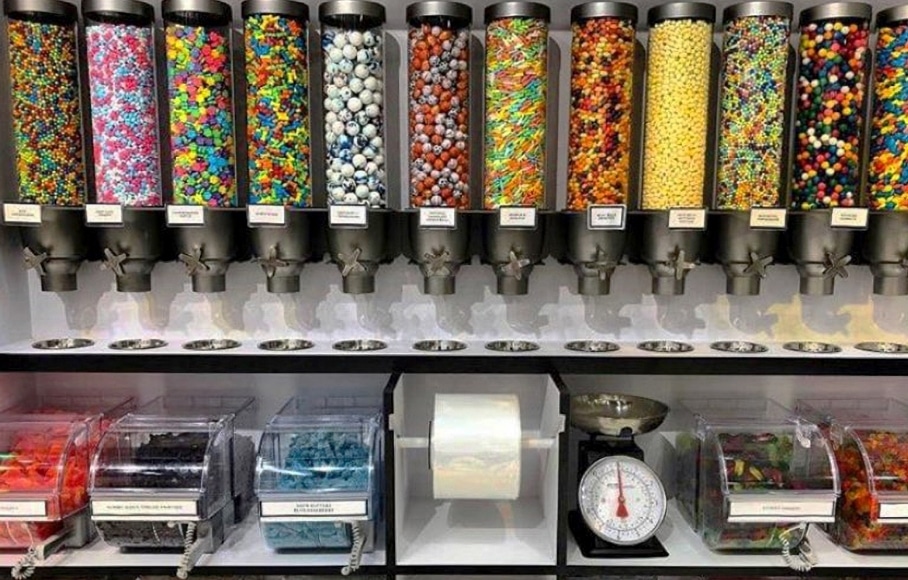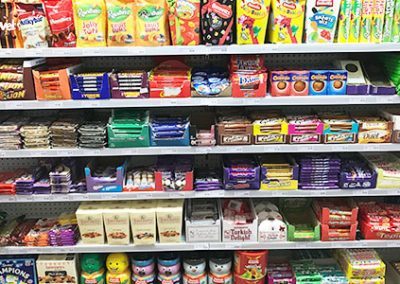Rumored Buzz on I Luv Candi
Rumored Buzz on I Luv Candi
Blog Article
The Best Guide To I Luv Candi
Table of ContentsIndicators on I Luv Candi You Should KnowThe Definitive Guide for I Luv CandiSome Ideas on I Luv Candi You Should KnowI Luv Candi - QuestionsThe Definitive Guide to I Luv Candi
We've prepared a great deal of organization strategies for this kind of task. Right here are the usual customer segments. Consumer Section Summary Preferences How to Discover Them Children Youthful consumers aged 4-12 Vibrant sweets, gummy bears, lollipops Partner with local institutions, host kid-friendly events Teens Adolescents aged 13-19 Sour sweets, uniqueness products, stylish treats Engage on social networks, work together with influencers Parents Grownups with young youngsters Organic and much healthier alternatives, classic sweets Offer family-friendly promos, market in parenting magazines Students University and college trainees Energy-boosting candies, affordable snacks Companion with close-by campuses, advertise throughout exam durations Gift Consumers People seeking presents Premium chocolates, present baskets Produce attractive display screens, use adjustable present alternatives In assessing the economic dynamics within our sweet-shop, we have actually discovered that consumers normally spend.Observations indicate that a normal customer often visits the shop. Specific durations, such as holidays and unique events, see a rise in repeat check outs, whereas, throughout off-season months, the frequency might decrease. spice heaven. Computing the lifetime worth of a typical consumer at the sweet-shop, we approximate it to be
With these aspects in factor to consider, we can deduce that the typical profits per consumer, over the course of a year, hovers. The most successful customers for a candy store are commonly families with young kids.
This market often tends to make constant purchases, enhancing the shop's earnings. To target and attract them, the sweet-shop can use colorful and spirited advertising and marketing strategies, such as dynamic screens, appealing promos, and perhaps even holding kid-friendly events or workshops. Developing an inviting and family-friendly atmosphere within the store can also enhance the overall experience.
What Does I Luv Candi Do?
You can additionally approximate your very own revenue by applying various assumptions with our economic prepare for a sweet store. Ordinary regular monthly earnings: $2,000 This kind of sweet-shop is usually a small, family-run organization, probably understood to citizens however not drawing in multitudes of travelers or passersby. The store could provide a selection of common sweets and a few homemade deals with.
The shop doesn't generally lug uncommon or pricey products, concentrating instead on cost effective treats in order to maintain regular sales. Assuming an average costs of $5 per customer and around 400 clients per month, the monthly profits for this candy shop would certainly be around. Average regular monthly revenue: $20,000 This sweet-shop advantages from its calculated area in an active urban location, attracting a multitude of customers seeking sweet extravagances as they go shopping.
In enhancement to its diverse sweet option, this shop might also offer associated products like gift baskets, sweet arrangements, and novelty products, providing numerous revenue streams - pigüi. The shop's area requires a greater allocate rent and staffing however causes greater sales volume. With an estimated typical investing of $10 per customer and about 2,000 clients monthly, this shop could generate
The 30-Second Trick For I Luv Candi
Situated in a significant city and traveler destination, it's a huge facility, usually topped several floorings and possibly part of a nationwide or international chain. The shop uses an enormous variety of candies, consisting of special and limited-edition items, and goods like top quality garments and accessories. It's not simply a shop; it's a location.
The functional costs for this type of store are considerable due to the area, size, personnel, and includes offered. Presuming a typical acquisition of $20 per consumer and around 2,500 consumers per month, this front runner shop could achieve.
Classification Instances of Costs Ordinary Monthly Expense (Variety in $) Tips to Reduce Costs Rental Fee and Utilities Shop rental fee, electrical power, water, gas $1,500 - $3,500 Take into consideration a smaller place, discuss rental fee, and make use of energy-efficient lighting and appliances. Supply Sweet, treats, product packaging materials $2,000 - $5,000 Optimize supply management to decrease waste and track popular things to prevent overstocking.
Marketing and Advertising Printed materials, on the internet ads, promotions $500 - $1,500 Concentrate on cost-effective digital advertising and marketing and make use of social media sites systems absolutely free promotion. carobana. Insurance coverage check here Service obligation insurance $100 - $300 Look around for affordable insurance policy rates and take into consideration packing plans. Devices and Maintenance Cash money registers, present shelves, repair services $200 - $600 Buy used equipment when possible and execute normal upkeep to expand tools life-span
Some Of I Luv Candi
Bank Card Processing Fees Costs for processing card settlements $100 - $300 Work out lower handling fees with repayment cpus or discover flat-rate alternatives. Miscellaneous Workplace materials, cleaning up supplies $100 - $300 Acquire in bulk and look for discount rates on products. A sweet-shop ends up being profitable when its complete income exceeds its complete fixed costs.

A huge, well-located candy shop would obviously have a higher breakeven factor than a small store that does not need much profits to cover their expenditures. Curious regarding the profitability of your sweet-shop? Check out our user-friendly monetary strategy crafted for candy stores. Merely input your own assumptions, and it will certainly help you calculate the quantity you require to earn in order to run a successful business.
The smart Trick of I Luv Candi That Nobody is Talking About

Finally, economic slumps that minimize consumer spending can impact candy store sales and earnings, making it essential for candy stores to manage their expenses and adapt to transforming market problems to remain rewarding. These risks are frequently consisted of in the SWOT evaluation for a sweet-shop. Gross margins and web margins are essential indicators used to determine the earnings of a sweet-shop business.
Basically, it's the revenue remaining after subtracting costs directly pertaining to the sweet inventory, such as acquisition costs from providers, production prices (if the candies are homemade), and team incomes for those associated with manufacturing or sales. Web margin, conversely, consider all the costs the sweet-shop incurs, consisting of indirect costs like administrative costs, advertising, rental fee, and taxes.
Sweet-shop usually have an average gross margin.For circumstances, if your sweet-shop earns $15,000 monthly, your gross revenue would certainly be approximately 60% x $15,000 = $9,000. Allow's illustrate this with an instance. Take into consideration a sweet-shop that marketed 1,000 candy bars, with each bar valued at $2, making the complete profits $2,000. The store sustains prices such as buying the sweets, energies, and salaries for sales personnel.
Report this page